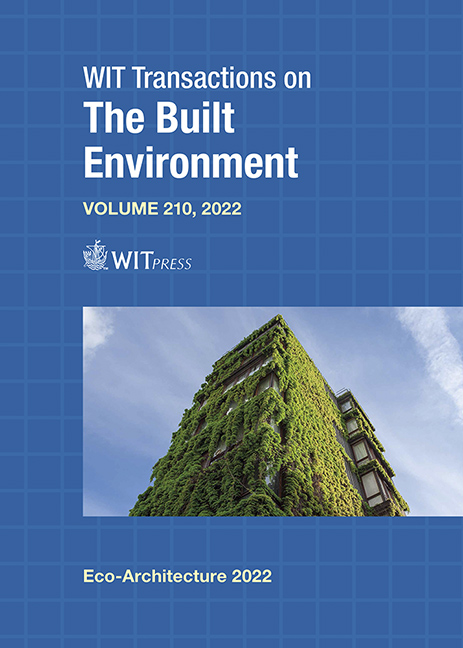USE OF ENGINEERED WOOD FOR THE RETROFITTING OF EXISTING STRUCTURES
Price
Free (open access)
Transaction
Volume
210
Pages
12
Page Range
225 - 236
Published
2022
Paper DOI
10.2495/ARC220191
Copyright
Author(s)
GIORGIO FRUNZIO, SERGIO RINALDI, MARIATERESA GUADAGNUOLO, LUIGI MASSARO, LUCIANA DI GENNARO
Abstract
Densely populated cities characterize urbanized territories, and most public buildings fail to meet many of the new demands imposed by the pandemic and the modern lifestyle. The need to expand spaces has become imperative, although, at the same time, it is necessary to reduce land consumption and preserve green spaces. If we consider the existing heritage a resource, these problems could represent an opportunity to improve existing structures both from a technological and structural point of view. It is possible to effort a holistic approach by improving the energy impact of new buildings and the heritage seismic behaviour facing the problem in a multidisciplinary way. Starting from the “building on the built” philosophy, this paper presents a possible use of engineered wood, such as cross-laminated timber (CLT), to pursue this strategy. The proposal is the realization of volumetric additions to existing buildings without further land consumption. This type of intervention, mentioned as “parasitic architecture”, positively impacts urban regeneration strategies. The use of prefabricated timber components (CLT) endorses the speed of realization, reducing the interferences with the surroundings and improving the healthiness and safety of the environment.
Keywords
parasite architecture, sustainable architecture, structural analysis, cross laminated timber, CLT, engineered wood, pres-lam, life cycle assessment, LCA, footprint





